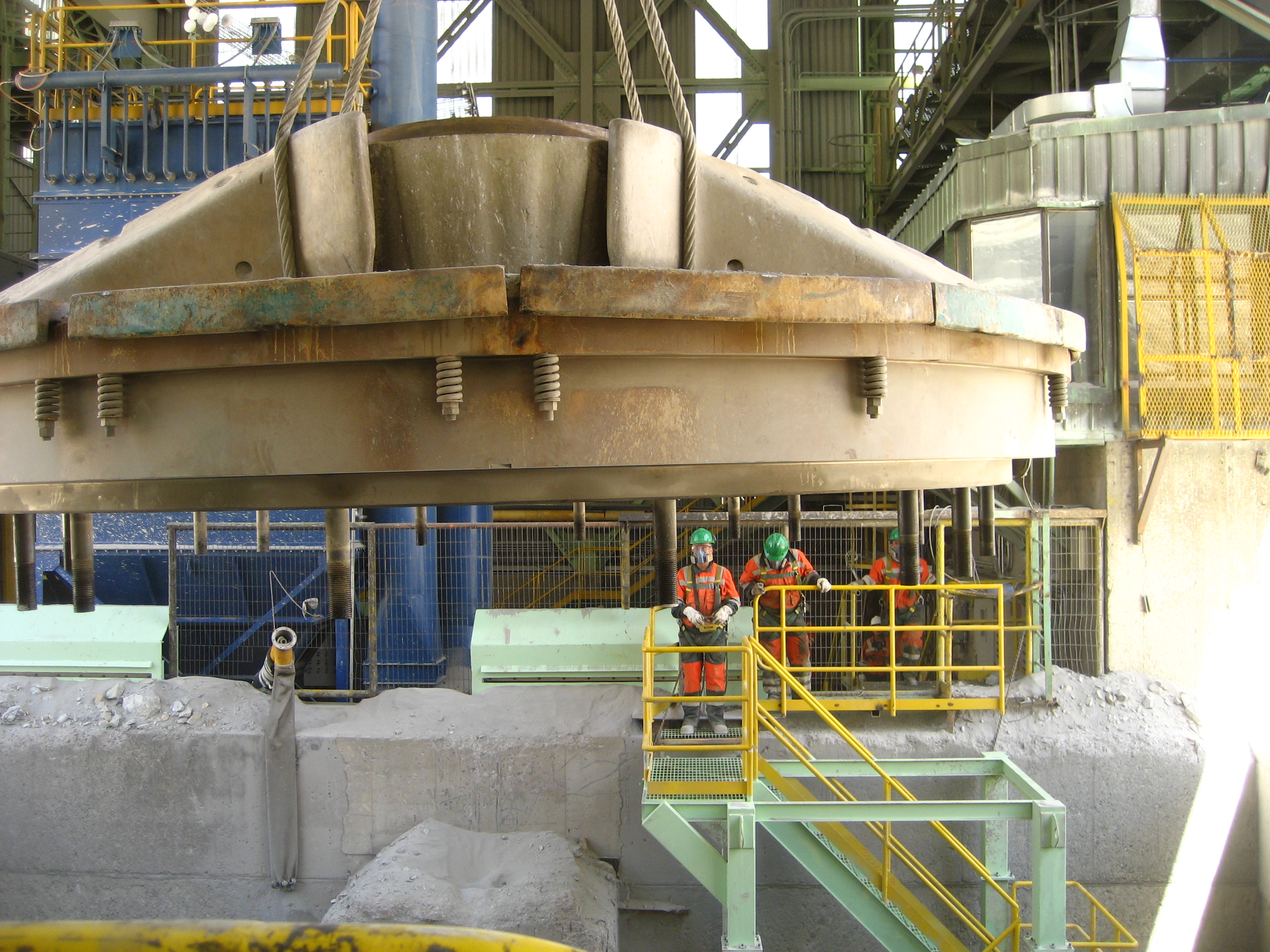When in 2010, Los Bronces faced the challenge of optimizing its operations in order to achieve greater levels of efficiency, safety, and maintenance performance, one of the focal points was the primary crushing plant. That was when the objective of reaching 93% equipment availability for its crushers was set. The challenge was to achieve the goal while maintaining a safe and positive work environment, in addition to high client satisfaction levels.
Los Bronces reduces downtime in primary crushing plant by 69% in 2016


Results: wide improvement in crushing line availability
The company tasked Metso with finding solutions to help the mine achieve the necessary equipment availability levels. Metso proposed a Life Cycle Services (LCS) mechanical maintenance contract for the primary crushing plant, that was put in motion in 2010 and initially involved 14 Metso specialists under a signed maintenance contract for a 60” x 89” Metso MKII Primary Gyratory Crusher and four Symons Crushers. Over the course of the following years, the scope of the contract was broadened to include other equipment. Metso currently has 39 permanent staff members in 4 shifts and 53 contract workers, who maintain two Metso Primary Gyratory Crushers of the same size and all the equipment and water facilities under this equipment, including two MP 1000 crushers, hoppers, chutes, belts, the overland system and two stockpiles of coarse minerals.
Under the LCS contract, equipment availability experienced an important increase in 2016 compared to 2015, with a 0.6% improvement on the crushing line 1 and a 2.1% increase in availability on line 2. This is equivalent to a 22% decrease in corrective maintenance time in 2016 compared with 2015, and a 69% reduction in total maintenance time in the same period. Thanks to the contract, certified under the ISO-9001:2008, ISO-14001:2004, and OHSAS-18001:200 standards, Anglo American has recently given Metso the award: “Commitment to Zero Harm and Living the Anglo American Way 2017". The contract has been renewed multiple times since 2010 and is currently valid until 2019.
“We shift the paradigm of these types of contracts. From the idea of simply maintaining maintenance time to considerably reducing it", added Guillermo Foncea, Metso Contract Administrator for Los Bronces.
Efficient organizational structure is key for the success of the LCS contract
When faced with an increase in the contract scope and Metso’s additional personnel over the course of two years, having an adequate on-site organizational structure became vital. With the objective of continuously improving their personnel's results, improvements in safety and work environment training were implemented, particularly for the technicians that work in the primary crushing and pebble plants. Likewise, it was necessary to create a structure that would adequately manage the service, for which a Safety Department for the contract was created, as well as groups tasked with Human Resources, Supply and Logistics, Maintenance Engineering and Operations.
“This structure was key to the success that this contract has had, assured José Luis Olaeta, Maintenance Contracts Manager for the Southern Cone at Metso.With the goal of helping Los Bronces reach its availability objectives, Metso was focused on two key aspects: having an adequate organizational structure for the contract and implementing maintenance tools and reliability engineering to improve the reliability of mechanical equipment.
He also adds, "the important thing has been to have competent people that perform the job safely and in compliance with the mine's quality requirements and within the planned timeline. That is why we have worked on leadership, coaching, and technical training courses. Having a high-performing team is complex. It is important to develop and strengthen existing synergies by keeping teams together, without too much rotation. We have also implemented an internal satisfaction survey that is conducted every four months, in order to guarantee service quality in general,".
In the case of Maintenance Engineering, the reliability of the facilities and equipment is fundamental and, due to this, Root Cause Analysis (RCA) studies were implemented that use Apollo RCA software. The RCA studies contribute to the analysis of machine errors and help to identify core problems in order to make improvement recommendations and thus, guarantee that the issues are not repeated. Additionally a Single-Minute Exchange of Die (SMED) analysis was carried out, also known as a Time and Motion study, during Plant Downtimes, with the goal of optimizing the times for Longer Planned Downtimes. Cameras with the latest technology were also installed to record tasks performed during downtimes in order to later make recommendations based on a detailed analysis. Lastly, portable hardware (tablets) were introduced so that the Maintenance Inspectors could record inspections digitally, replacing paper records.